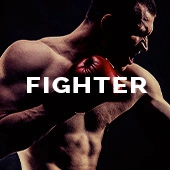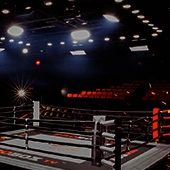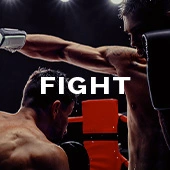by David P. Greisman
This was the night that Terence Crawford needed.
He fought on HBO for the fourth time in his pro career. He headlined in his hometown of Omaha, Nebraska, in front of an announced crowd of nearly 11,000 people. He made the first defense of the lightweight world title he’d won this past March from Ricky Burns. And he succeeded, stopping Yuriorkis Gamboa via ninth-round technical knockout, excelling and exciting in what has been described as a star-making performance.
Crawford had to adjust to some early difficulty against Gamboa. It’s actually better for him that the bout unfolded that way.
Gamboa captured gold in the 2004 Olympics and had previously been a featherweight titleholder in the pro ranks. He was undefeated coming into the Crawford fight but had lost the momentum he’d gathered and the respect he’d garnered earlier in his career.
He’d gone from blowouts of Rogers Mtagwa and Jorge Solis and wins over Orlando Salido and Daniel Ponce de Leon to sitting on the shelf. He’d parted with promoter Top Rank, which sold his contractual rights to rapper 50 Cent’s fledgling company. He had fought only twice since — once, after 15 months out of the ring, in a win over Michael Farenas that came, amusingly, on the undercard of a Top Rank-promoted pay-per-view in December 2012; and in June 2013, when he outpointed Darlys Perez in a boring bout on HBO underneath Adonis Stevenson’s knockout of Chad Dawson.
Gamboa was coming back this past Saturday from a yearlong layoff. He hadn’t accomplished anything of note at junior lightweight beyond winning a meaningless interim title against Farenas, and his sole lightweight victory of note came against Perez, also for an interim belt. He had been implicated in early 2013 as being one of numerous pro athletes to receive performance-enhancing drugs from the Biogenesis clinic in Florida.
Had Crawford blown Gamboa out early and easily, it would’ve been seen as a win over an undersized, inactive opponent whose chin had been shaky and stamina questionable in past fights.
That’s still what the win was, but it means more since Gamboa did decently at the outset.
Usually such success would reflect poorly on the fighter in Crawford’s position. But the punches that Gamboa landed in the first three or four rounds, plus the shots that Gamboa made Crawford miss, were not so much a reflection on what Crawford isn’t but rather on what Gamboa is. Gamboa’s experience, skill and speed were evident. And then Crawford’s class became clear.
Crawford changed his stance, changed his approach and changed the fight. He downed Gamboa in the fifth round with a right hook counter as Gamboa charged in. He wobbled Gamboa again as the round came to a close. He became incredibly accurate with his shots and made Gamboa far less so.
In the first four rounds, CompuBox credited Crawford with going just 30 of 135, a 22 percent connect rate, including 20 of 54 with power punches, a 37 percent connect rate. Gamboa was 41 of 129, a 32 percent connect rate, including 36 of 94 with power punches, a 38 percent connect rate.
In rounds five through eight, however, Crawford was 94 of 177, a 53 percent connect rate, including 62 of 89 with his power punches, an astounding 70 percent connect rate. Gamboa was 33 of 178, a 19 percent connect rate, including 30 of 135 with power punches, a 22 percent connect rate.
Crawford floored Gamboa again in the eighth. Yet Gamboa was able to hurt Crawford in the opening minute of the ninth, the beginning of a dramatic round that would also be the end. Crawford hurt Gamboa in the final minute, dropped him for the third time in the bout, then finished Gamboa with a big uppercut that put him on the canvas for the fourth and final time. The referee had seen enough.
The audience now wants to see more.
This was the night that Terence Crawford needed, though his star turn is not yet complete.
It was indeed Gamboa’s style, stamina and chin that contributed to his downfall. Yet Crawford’s skill and switch in strategy also were integral for bringing it about.
Crawford has impressed in what has been just 15 months since his HBO debut. Back in March 2013, Crawford jumped up from lightweight to junior welterweight as a late replacement opponent facing Breidis Prescott. He seized the opportunity, defeating Prescott by unanimous decision and earning a return date on the network. Crawford fought twice more on HBO last year, both times at lightweight, stopping Alejandro Sanabria in June and then outpointing Andrey Klimov in October.
The Klimov fight wasn’t entertaining, due in large part to Klimov deciding not to engage in action, while Crawford opted to box against his unwilling opponent. That was the last memory most of the United States boxing audience had of Crawford, who subsequently traveled to Scotland to defeat Burns in a bout not seen on American television.
The win over Gamboa will prove far more memorable than the victory against Klimov.
Still, it was a win over an opponent whose résumé was weak at lightweight, a division that hasn’t had the greatest of depth in recent years.
The BoxingScene.com ratings compiled by Cliff Rold had Crawford at No. 3 behind Miguel Vazquez and Richar Abril. Gamboa followed lower on the list, after Ray Beltran, Ricky Burns, Paulus Moses and Sharif Bogere.
The Transnational Boxing Rankings Board had Crawford at No. 2 behind Vazquez (Abril was removed due to inactivity) and had Gamboa at No. 7, behind Beltran, Burns, Moses and Bogere.
Dan Rafael of ESPN.com had Crawford at No. 2 behind Vazquez and had Gamboa at No. 7, behind Beltran, Abril, Burns and Kevin Mitchell.
There isn’t much for Crawford at 135, and his team should keep him away from Vazquez, a difficult boxer and stylistic spoiler. That match seems even more unlikely now that Vazquez has signed with boxing adviser Al Haymon, whose fighters Crawford’s promoter, Top Rank, typically does not work with.
Crawford may end up going to junior welterweight, where there are more name opponents and where he will have five more pounds of leeway at the scale; he had rehydrated more than 17 pounds between weigh-in and fight night, going from 134.75 pounds to 152.
We don’t yet know how well Crawford will perform at 140. And even if he stays at lightweight for a fight with 130-pound titleholder Mikey Garcia, that would be another bout against another opponent who hasn’t done anything in the 135-pound division.
We shall see. And we’re increasingly more likely to watch.
Crawford-Prescott pulled in an average of 845,000 viewers as the co-feature underneath the rematch between Brandon Rios and Mike Alvarado. Crawford-Sanabria averaged 1.107 million viewers underneath the bout between Garcia and Juan Manuel Lopez. Crawford-Klimov, which was part of a card with Miguel Cotto vs. Delvin Rodriguez headlining, averaged 1.110 million.
He fights on short notice. He’s willing to travel into hostile territory. He knows how to box, and he’s shown now what he can do when forced to battle. He’s beaten all who’ve come before him.
We need to wait to see whom he beats next. After all, we’ve seen plenty of stars artificially manufactured. Crawford keeps putting himself in position to earn his stardom by earning his stripes.
The 10 Count
1. It has been more than three years since Evander Holyfield last fought. It has been five and a half years since Holyfield last challenged for a heavyweight world title. It has been nearly 14 years since Holyfield last held a major title belt.
At long last, Holyfield has announced his retirement.
“I’m done,” the 51-year-old former lineal cruiserweight champion and two-time lineal heavyweight champion was quoted as saying last week. “They’re putting me in the [Nevada] Hall of Fame on [August 9], so it will be official. Won’t nobody fight me, and now I don’t want to get hit.”
This is welcome news regarding a career that many felt had gone on too long dating back a decade ago. Yet he continued on, partially out of a desire to once again become the heavyweight champion, but likely also because of his well-known financial woes.
As for Holyfield’s eligibility into the International Boxing Hall of Fame, I imagine it’ll be based on when Holyfield last fought, rather than when his announcement came. That means we can expect to see Holyfield on the ballot at the end of 2016, for potential induction in 2017.
2. We’ll see whether Hall of Fame voters will consider Evander Holyfield’s alleged connection to an Alabama pharmacy that distributed steroids to several pro athletes.
Some voters might look at the date in which Holyfield would’ve received those drugs, 2004, and conclude that he’d already compiled a Hall of Fame-worthy career beforehand.
Others might question whether that was truly the first time in which he’d used illicit substances.
These are the kinds of questions that baseball’s voters also must consider, given the carefully crafted explanations, excuses and admissions those players have been known to provide. And we must also realize that we’re penalizing those who get caught while also potentially admitting other cheaters who never were implicated or caught.
Rare is the athlete who actually admits to everything he’s done. After all, his legacy is all that remains once he retires, and he does not want anything to diminish that. One big reason that Lance Armstrong finally admitted to his lengthy use of banned substances was because the U.S. Anti-Doping Agency had compiled a detailed report against him, and had subsequently banned Armstrong from being able to compete in triathlons.
3. Of course, such decisions would be easier if, oh, drug testing were better. Yet the athletic commissions and sanctioning bodies are still woefully behind with their testing standards and practices. Promoters, by and large, are like baseball’s owners were during the Mark McGwire-Sammy Sosa years. They would prefer to be blissfully ignorant of potential doping, rather than spend money to potentially have a star fighter test positive and a major card get canceled.
And too few boxers are stepping up and leading by example.
It’s particularly galling when it is a star fighter who could truly afford to do so.
Kubrat Pulev, a mandatory challenger to heavyweight champion Wladimir Klitschko, wants Klitschko to undergo more stringent testing for their Sept. 6 bout.
“I am tested for the use of illicit substances at least six times a year. It’s unfair if Klitschko won’t pass the same tests that I do,” Fightnews quoted Pulev as saying. “If you don’t take the test, you’re not a correct person.”
Responded Klitschko, according to the website: “If you don’t want to fight, you can stay at home.”
Granted, we’ve seen fighters in the past use demands about drug testing as a form of mind games before a bout. And there’s been absolutely no proof that Klitschko has used performance-enhancing drugs during his pro boxing career.
But what does a fighter have to lose by undergoing more drug tests? This is a world in which suspicion clouds several sports, and in which athletes both amateur and pro have been known to do whatever it takes to get a competitive advantage.
They can separate themselves from the general suspicion and skepticism by putting themselves through more stringent testing than is typically done. Sure, passing those tests doesn’t necessarily prove they’re clean, not when drug makers and distributors have shown themselves to be ahead of the tests and aware of how to beat them.
Still, Pulev being tested a minimum of six times a year is more than we can say about an overwhelming majority of fighters today. And yet six times a year is still not frequent enough…
4. There are 75 days between today (June 30) and the presumed date of Floyd Mayweather’s next bout (Sept. 13).
That’s a little more than 10 weeks away.
That’s a full month less than Mayweather’s Sept. 14, 2013, fight with Canelo Alvarez which was announced on May 29 of last year, leaving 108 days, or more than 15 weeks, to market the most lucrative boxing event in history.
Contrast that with the announcements for the Robert Guerrero fight (held May 4, 2013, announced Feb. 19, 2013, just 74 days beforehand) and the Marcos Maidana bout (held May 3, 2014, announced Feb. 24, 2014, just 69 days beforehand).
At this point, barring a rematch with Maidana, I’m thinking we might not see Mayweather return in September, or perhaps not even this year.
Mind you, the making of an announcement doesn’t necessarily mark the beginning of promotional efforts. Work can and does go on behind the scenes beforehand. But the lack of an announcement right now may signify where negotiations, if there are any, may stand.
“There have been no talks about the Mayweather rematch so far,” said Maidana’s adviser, Sebastian Contursi, speaking with FightHype’s Ben Thompson in an article posted June 19.
A couple things to consider: Mayweather and his team worked closely with Richard Schaefer of Golden Boy Promotions, and Schaefer is no longer with the company; and Mayweather may be waiting to see how things shake out in other fights, as those results may produce a more lucrative pairing than a Maidana rematch.
5. Are you tired of pay-per-views yet?
We had Canelo Alvarez vs. Alfredo Angulo in March, Manny Pacquiao-Timothy Bradley 2 in April, Mayweather-Maidana in May and Miguel Cotto-Sergio Martinez in June.
That’s four.
We’ll have Alvarez vs. Erislandy Lara in July, Pacquiao’s next bout, Cotto’s potential return in December, and perhaps Mayweather vs. TBA if he fights again this year.
That’s four more.
Just think: If Adrien Broner had beaten Marcos Maidana last year on a card that was initially supposed to be a pay-per-view, we might’ve added two more PPVs to this year’s total.
6. While some people will point to the glut of pay-per-views this year as the cause for the disappointing sales figures for Cotto-Martinez (300,000 to 315,000, per Sports Illustrated, or approximately 350,000, according to ESPN.com), there’s another important factor to consider:
Piracy.
Illegal live streaming and illicit downloading have become even more prevalent. It’s not just something that boxing fans do. It’s something that people will do with their favorite television shows — the season finale of “Game of Thrones” was downloaded by more than 1.5 million people in less than half a day and by more than 7.5 million people overall, according to TorrentFreak.com.
It’s becoming an increasingly accepted practice among consumers, just as music downloading once was in the era of Napster. And while there’s a core of boxing fans still willing to buy pay-per-views, and a number of casual fans who are willing to shell out big bucks for the biggest fights, many others are taking advantage of their ability to watch nearly anything at any time — for free.
7. And thank goodness for the Internet’s ability to bring us worldwide action. After all, the American networks will bring us unappealing tripleheaders such as Showtime’s Aug. 9 card featuring Danny Garcia-Rod Salka, Lamont Peterson-Edgar Santana and Daniel Jacobs-Jarrod Fletcher…
…but probably not the Sept. 5 fight between lineal 112-pound champion Akira Yaegashi and knockout artist Roman Gonzalez.
8. Boxers Behaving Badly update, part one: Micki Nielsen had been facing potential prison time on an assault charge stemming from a November incident that the cruiserweight prospect claimed was in self-defense. Last week, he was issued a suspended sentence of three months in jail, time he will not serve if he stays out of trouble for the next two years, according to Denmark’s TV2.
Nielsen was also ordered to complete 80 hours of community service.
The 21-year-old had been accused of assaulting a man who had allegedly struck Nielsen’s younger brother in the face with a bottle, according to The Copenhagen Post. Nielsen had also been accused of striking a woman during the incident, He was found not guilty of that charge.
Nielsen (whose older brother, Patrick, is also a pro boxer) last fought legally in June, scoring a third-round technical knockout over Igor Pylypenko. He is now 14-0 with 11 KOs.
9. Boxers Behaving Badly update, part two: Former 130-pound prospect Ahmed Elomar will spend at least two and a half years behind bars for hitting a police officer with a flagpole during a 2012 protest in Australia, one of many international protests held in response to an infamous video on YouTube, according to The Sydney Morning Herald.
“With time served, Elomar will be eligible for release on March 3, 2016. His maximum sentence is four years and eight months,” the newspaper reported.
The 31-year-old turned pro in 2004 and fought through 2010, going 16-1-2 with 9 knockouts.
10. Lightweight titleholder Miguel Vazquez signed with powerful boxing adviser Al Haymon while at a McDonald’s.
No, seriously:
I can just imagine how it went. I’m guessing Haymon’s right-hand man, Sam Watson, used some available props to seal the deal:
“Right now, you’re a small fry,” Watson said to Vazquez in my decidedly bizarre fantasy world.
“But work with us, and you’ll be the Big Mac…”
“Fighting Words” appears every Monday on BoxingScene.com. Pick up a copy of David’s new book, “Fighting Words: The Heart and Heartbreak of Boxing,” at http://bit.ly/fightingwordsamazon or internationally at http://bit.ly/fightingwordsworldwide . Send questions/comments via email at fightingwords1@gmail.com


